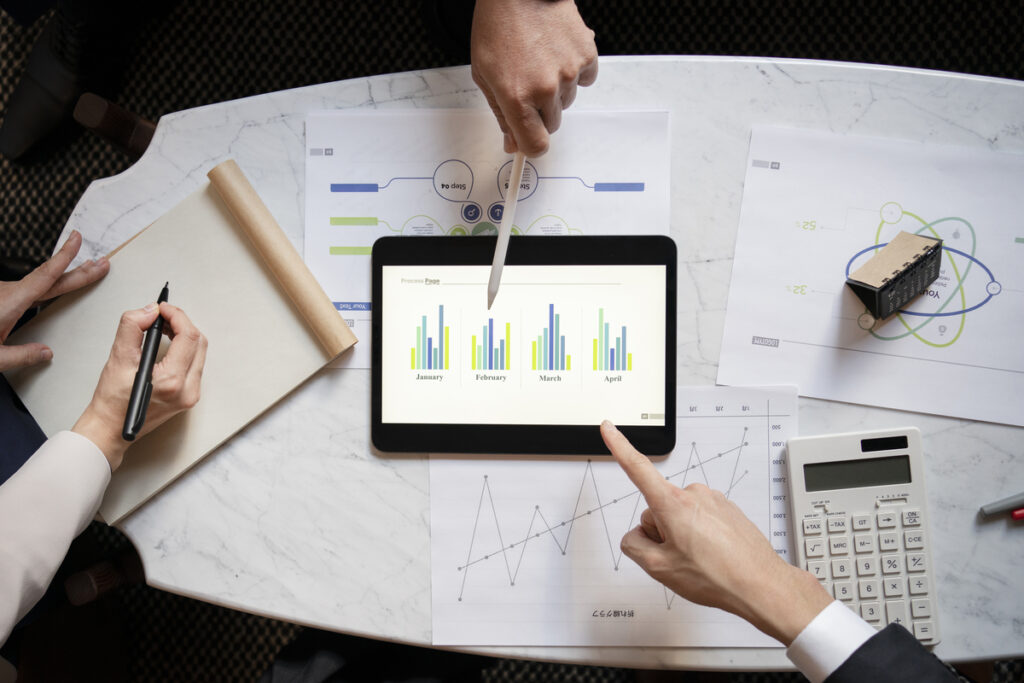Effective project monitoring is crucial in the dynamic construction sector to guarantee on-time delivery, economical efficiency, and quality control. Manual construction monitoring methods, which mostly depend on human supervision, sporadic inspections, and manual data entry, have historically been the standard. However as technology has advanced, automated construction monitoring techniques have become more popular since they provide real-time data collecting, analysis, and reporting.
Knowing the distinctions between automated and manual construction monitoring methods will be essential in 2025 to maximize project results. This article will examine both approaches, stressing the benefits, drawbacks, and effects of automated construction monitoring techniques on contemporary building projects.
Table of Contents
Techniques for Manual Construction Monitoring
Manual construction monitoring refers to more conventional techniques in which human inspectors visit construction sites on a regular basis to evaluate quality, safety, and progress. These methods use written reports, checklists, and photos to record results and monitor project progress.
Here are some benefits of manual construction monitoring:
- Human Judgement: Skilled inspectors are able to spot problems that automated systems could overlook, particularly those that need for a subjective evaluation and a sophisticated comprehension.
- Flexibility: Decisions and adjustments may be made immediately while monitoring manually, which is advantageous in dynamic project contexts.
- Cost-Effective for Small Projects: Because manual monitoring doesn’t necessitate a large investment in technology, it may be more economical for smaller projects.
The disadvantages of manual monitoring construction:
- Inconsistency: Subjective judgment and human mistake can result in inconsistent reporting and the possible omission of important problems.
- Time-consuming: Manual inspections take a lot of time and labor, which frequently causes delays in finding and fixing problems.
- Restricted Data Collection: Manual methods frequently rely on sporadic snapshots rather than ongoing monitoring, which limits the quantity and kind of data they can gather.

Automated Construction Monitoring Techniques
Automated construction monitoring techniques enable real-time data processing and monitoring by utilizing cutting-edge technologies like wearables, drones, artificial intelligence (AI), and the Internet of Things (IoT). These methods provide ongoing supervision of building operations, facilitating proactive management and quick decision-making.
Benefits of automated construction monitoring techniques:
- Real-Time Data: Continuous, real-time data is provided by automated systems, which enables prompt problem identification and resolution.
- Accuracy and Consistency: Since automated systems do not rely on human error, data gathering and reporting are accurate and consistent.
- Enhanced Safety: In real time, wearable sensors and devices can keep an eye on the health and safety of employees and send out notifications when dangerous conditions arise.
- Extensive Data Collection: Automated methods have the capacity to gather enormous volumes of data on a variety of criteria, allowing for in-depth analysis and improved project management.
Disadvantages of automated construction monitoring techniques:
- High Initial Investment: Setting up automated monitoring systems can be costly, involving a large out-of-pocket expenditure for infrastructure and equipment.
- Technical Difficulties: Some construction companies may find it difficult to set up, maintain, and debug automated systems since they demand specialized technical knowledge.
- Data Privacy and Security: The use of detectors and wearable devices raises concerns about the security and privacy of data, requiring robust measures to protect private data.
Suggested article to read: Data Security in Construction Data Management | Cybersecurity in Construction
Comparing Automated and Manual Methods
A brief comparison contrasting the overall effects, accuracy, and efficiency of automated and manual construction monitoring techniques.
1. Effectiveness and Output
By saving time on manual inspections and offering real-time insights, automated construction monitoring techniques dramatically increase production and efficiency. As a result, problems are identified and resolved more quickly, reducing project delays. Manual approaches, on the other hand, require more labor and are slower, which frequently causes delays in project completion dates.
2. Expense Factors
Although labor expenses are lower for manual monitoring, automated methods can save money over time by avoiding rework, preventing costly errors, and reducing labor costs. Increased productivity and fewer project hazards can outweigh the expensive initial cost of automated technologies.
3. Gathering and Examining Data
Automated construction monitoring techniques are excellent at gathering and analyzing data. They can provide a thorough overview of the project by continuously monitoring a variety of characteristics, including temperature, humidity, structural integrity, and worker movements. On the other side, gaps and a less thorough analysis may arise from the periodic data collecting that characterizes manual procedures.
4. Adaptability and Flexibility
Flexibility and quick decision-making are made possible by manual monitoring, which can be helpful in dynamic project situations. Even while automated construction monitoring techniques are quite effective, in some complicated situations they could not be as flexible as human judgment. But machine learning and artificial intelligence developments are slowly closing this gap and allowing automated systems to handle increasingly complicated decision-making procedures.
Suggested article to read: Wearable Technology in Construction
The Best Ways to Use Automated Construction Monitoring Techniques
It is crucial to adhere to best practices while implementing automated construction monitoring techniques in order to optimize their benefits:
- Choose the Right Technologies: Decide which technologies best suit the particular requirements and project scope.
- Ensure Data Accuracy: Regularly adjust devices and sensors to maintain data precision and dependability.
- Educate Your Group: Give team members thorough training so they can operate and maintain automated systems efficiently.
- Integrate Systems: To guarantee smooth data flow and communication, integrate automated monitoring tools with currently in place project management systems.
- Put Data Security First: Take strong action to safeguard the security and privacy of data while resolving issues with the usage of wearables and sensors.
Prospective Developments in Construction Monitoring
A number of trends are anticipated to influence the direction of construction monitoring as we approach 2025:
- Integration of AI and Machine Learning in Construction: These advancements will enhance automated construction monitoring techniques, allowing forecasting and more advanced decision-making.
- Drones in Construction Usage Will Rise: Drones, which offer aerial views and thorough site evaluations, will be used more frequently for construction site monitoring.
- Wearable Technology: With real-time data and warnings, wearable gadgets will be used more and more to monitor worker health and safety.
- 5G Connectivity: As 5G technology becomes more widely used, data transfer speed and dependability will increase, increasing the effectiveness of automated monitoring systems.

Conclusion
Contrasting automated and manual construction monitoring methods indicates unique benefits and drawbacks for each strategy. Although manual methods provide flexibility and human judgment, they are frequently labor-intensive and inconsistent. On the other hand, real-time data, accuracy, and thorough insights are provided by automated construction monitoring techniques, which greatly improve project delivery.
Adopting automated procedures will be more crucial as 2025 approaches for maximizing productivity, security, and quality in building projects. Building projects can be completed to the highest standards, on schedule, and within budget by embracing these cutting-edge technology and adhering to best practices. Without a question, automation will play a major role in construction monitoring in the future, propelling the sector’s growth and innovation.
Suggested article for reading:
The Impact of Real-Time Construction Monitoring on Project Delivery (2025)
Construction Monitoring in Project Management Tools; 2025 Guide
The Role of Construction Monitoring in Risk Management; 2025 Guide
Resources:
ProjectVectors | Fuzen | MPDI | Avvir
For all the pictures: Freepik



